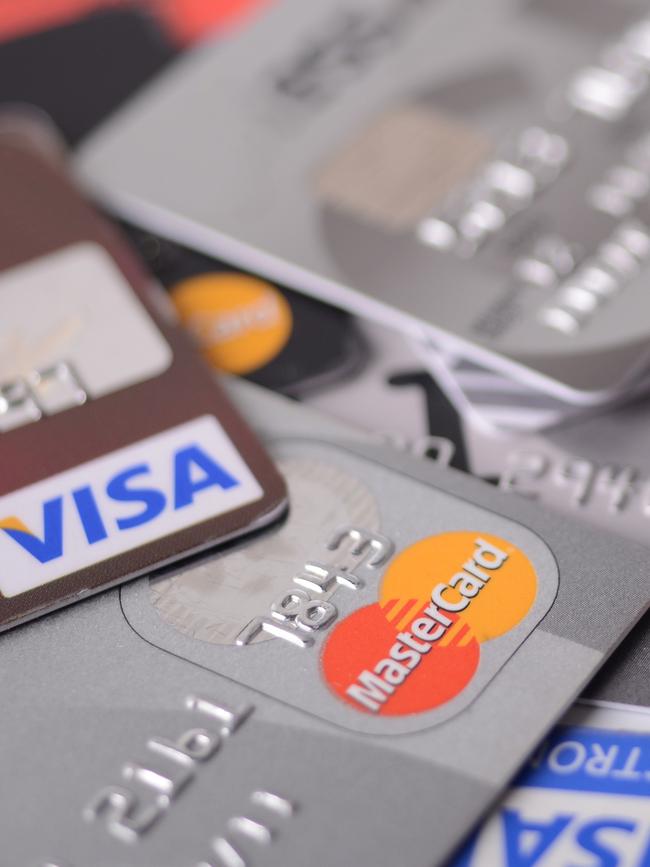For banks, it’s time to get loyal
The banks are slow learners when it comes to looking after customers.

Airlines do it and department stores and retailers including Bakers Delight are on to the strategy, so why are Australia’s banks dragging the chain on rewarding customer loyalty?
The simple answer seems to be that the major banks just haven’t had the commercial need, or pressure, to warrant rewarding loyalty, beyond their credit card programs that accrue points.
A rethink may be under way, though, after the fierce scrutiny of the Hayne royal commission, which exposed the underhanded treatment of customers, and as global banks step up their efforts to reward loyalty.
It’s interesting timing that Westpac quietly started a pilot customer loyalty program in mid-November at its retail bank, but the details are being kept under wraps.
It was under intense questioning at Westpac’s annual general meeting last month that chief executive Brian Hartzer let it slip that a loyalty-style trial was under way.
That was in response to a retail shareholder asking why other industries rewarded loyalty, including at times providing investors with discounts, but the banks hadn’t.
“We are very alive to this issue,” Hartzer replied.
“We are piloting something at the moment … we absolutely understand and are thinking hard about the issues.”
It was National Australia Bank chief executive Andrew Thorburn who put customer loyalty back in the spotlight last year, when he broke ranks with his rivals and chose to keep NAB’s variable mortgage rates steady, despite higher funding costs.
“We value our existing customers — we’ve got almost a million home loan customers at NAB, and we’re signalling to them that we appreciate your loyalty, we appreciate your business, and we want to keep this rate on hold for as long as we can to acknowledge that,” Thorburn said at the bank’s annual results.
Still, any meaningful change in the loyalty and customer rewards sphere would be a big pivot for the major banks.
Their strategies in home loans have focused over the past decade on often aggressive discounting to attract new customers with lower interest rates that are not available to those already on their books.
That is exacerbated by the fact that when big banks reprice mortgages to account for costs, changes typically apply across the entire portfolio of existing loans.
In that situation, loyalty is discouraged rather encouraged, but the banks also rely on a prevailing level of existing customers not being too bothered to make a switch.
Those well-trodden strategies did not escape the attention of the competition regulator when it took a close look at the prices at seven banks in the residential mortgage market last year.
Its final report said: “Existing borrowers who do not actively shop around for a better deal on a regular basis are the main losers from opaque discretionary pricing.
“They have paid interest rates at the inquiry banks that, depending on the category of residential mortgage, were up to 32 basis points higher on average than those paid by new borrowers, as at June 30, 2018.”
So perhaps loyalty is not an aspiration, because the banks would have to pay out more to get such programs under way.

Department stores, cafes and other retailers that have to fight a lot harder to get customers coming back know the value of customer loyalty programs and, increasingly, the more intelligent use of data on spending habits.
At Qantas, the airline’s loyalty program is deemed extremely valuable not only from a customer retention perspective, but because it has been an important plank of earnings growth for the company.
But McLean Roche Consulting’s Grant Halverson, and former executive at Citibank and Diners Club, do not see the banks changing their tune on broader reward programs outside credit cards in a big way anytime soon.
“There is a splendid oligopoly here and they don’t do much to change it,” he said. “You’ve got this nice cosy club.”
Among the smaller players, banking and insurance group Suncorp seems to have embraced customer loyalty after introducing a program early last year.
It leverages Suncorp’s commercial relationships to offer customers discounts at more than 100 retailers, and is now said to have almost 500,000 registered users.
The discounts include fuel, groceries, white goods, travel and electronics.
It helps that Suncorp as an insurer — including of cars and homes — is a big purchaser at some of the retailers through which it offers discounts.
Globally, many banks are piling in on loyalty. US bank Capital One — among other measures — has set up a loyalty partnership with Uber that rewards customers with their 10th ride free if they link their bank card to the app.
Citibank has the ThankYou Rewards program that sees customers earn points depending on how many linked Citi products they have.
For example, different levels of points are awarded in each statement period if a customer has a Citi savings account linked to a mortgage with the bank or a money market account.
The conundrum here, which is an issue also talked about frequently at the Hayne royal commission, is incentives.
In my view, loyalty programs can work as long as bank staff are not given an incentive to cross-sell and push unwanted products on to customers.
Loyalty programs must also have simply worded disclosures and terms so consumers understand how they work.
Wells Fargo is the prime case of introducing an incentive structure that blows up and causes a compliance nightmare. It was marred by a scandal where staff were opening accounts without customer authority as a way of hitting their own bonus targets.
Wells Fargo — which is still reeling from the fallout — also has a customer relationship program where rewards and benefits are linked to balance amounts across accounts with the bank.
Australia’s move to an open banking regime — which gives consumers the right to share their account information with other institutions and third parties — could give the nation’s major banks a bigger shove into the loyalty arena.
While the start date for consumer data has suffered an eight-month delay, bank customers will wield more power from 2020.




To join the conversation, please log in. Don't have an account? Register
Join the conversation, you are commenting as Logout